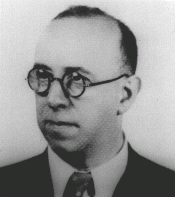You searched for: 喀麥隆facebook竞价【TG飞机:@bapingseo】YouTube竞价开户推广【TG电报:@bapingseo】西亚引流软件【Telegram:@bapingseo】捕鱼发发发官网飞艇4码倍投计划图集结号斗牛手机版官网下载?6WfyEN/i0WqZJ.html
<< Previous | Displaying results 301-350 of 489 for "喀麥隆facebook竞价【TG飞机:@bapingseo】YouTube竞价开户推广【TG电报:@bapingseo】西亚引流软件【Telegram:@bapingseo】捕鱼发发发官网飞艇4码倍投计划图集结号斗牛手机版官网下载?6WfyEN/i0WqZJ.html" | Next >>
-
Betje Jakobs
ID CardBetje and her sister Saartje were born to Jewish parents in the town of Zwolle in the Netherlands' north central province of Overijssel. Betje was known affectionately as "Bep" to her friends. The Jakobs family owned a successful sporting goods store. 1933-39: As a young girl, Betje enjoyed playing the piano, knitting and tennis. At age 16, while still in secondary school, she began to date Maurits Wijnberg, a boy two years her senior, whose family owned Zwolle's Hotel Wijnberg. 1940-42: The Germans…
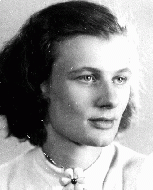
-
Rozia Grynbaum
ID CardRozia was the second-oldest of nine children born to religious Jewish parents in Starachowice, a town in east-central Poland. Their small one-story house served as both the family's residence and their tailor shop. The tailoring was often done in exchange for goods such as firewood or a sack of potatoes. Rozia worked in the shop sewing women's clothing. 1933-39: Rozia married a Jewish tailor from Radom, a large town some 60 miles south of Warsaw. The couple settled in Starachowice, and they ran a tailor…
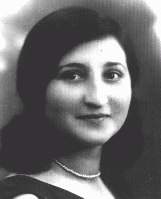
-
Notice of Gregor Wohlfahrt's execution
DocumentAuthorities in Berlin, Germany, sent this notice to Barbara Wohlfahrt, informing her of her husband Gregor's execution on the morning of December 7, 1939. Although he was physically unfit to serve in the armed forces, the Nazis tried Wohlfahrt for his religious opposition to military service. As a Jehovah's Witness, Wohlfahrt believed that military service violated the biblical commandment not to kill. On November 8, 1939, a military court condemned Wohlfahrt to beheading, a sentence carried out one month…

-
American propaganda announcement
DocumentAnnouncement dropped by American planes on Shanghai near the end of the war. [From the USHMM special exhibition Flight and Rescue.]
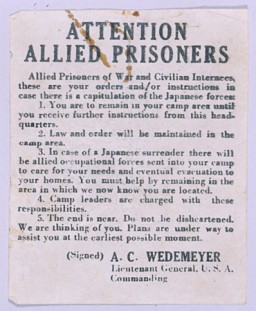
-
Josef Deutsch
ID CardJosef was born to Yiddish-speaking, religious Jewish parents in the town of Viseu de Sus in Transylvania, a region of Romania that belonged to Hungary until 1918. In 1890 he married Emma Geisler from the nearby town of Bistrita. The couple had four children and after 1910 the family lived at #4 Hid Street in Viseu de Sus. Josef was a merchant who owned a stall in Viseu de Sus's public market. 1933-39: By 1939 two of Josef's grown sons had moved to the Hungarian capital of Budapest. Josef and his wife…
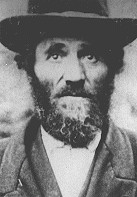
-
Dismissal letter
DocumentDuring the interwar period Dr. Susanne Engelmann served as the principal of a large public high school for girls in Berlin. This letter notified her of her dismissal, as a "non-Aryan," from her teaching position. The dismissal was in compliance with the Civil Service Law of April 7, 1933. On April 7, the German government issued the Law for the Restoration of the Professional Civil Service (Gesetz zur Wiederherstellung des Berufsbeamtentums), which excluded Jews and political opponents from all civil…
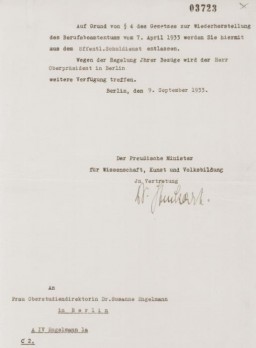
-
Advertisement for the Violetta women's club
DocumentA newspaper advertisement for the Damenklub Violetta, a Berlin club frequented by lesbians, 1928. Before the Nazis came to power in 1933, lesbian communities and networks flourished in Germany.

-
Theresienstadt: Establishment
ArticleLearn about the establishment of the Theresienstadt camp/ghetto, which served multiple purposes from 1941-45 and had an important propaganda function for the Germans.

-
The Press in the Third Reich
ArticleAfter rising to power, the Nazis eliminated freedom of the press in Germany. Learn more about how they established control over the press and manipulated it.

-
Anne Frank Biography: Who was Anne Frank?
ArticleAnne Frank is among the most well-known of the six million Jews who died in the Holocaust. Discover who Anne Frank was and what happened to her.
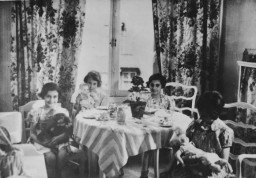
-
Women in the Third Reich
ArticleDespite the Nazi Party's ideology of keeping women in the home, their roles expanded beyond wives and mothers.

-
Raoul Wallenberg and the Rescue of Jews in Budapest
ArticleSwedish diplomat Raoul Wallenberg led an extensive rescue effort during the Nazi era. His work with the War Refugee Board saved thousands of Hungarian Jews.
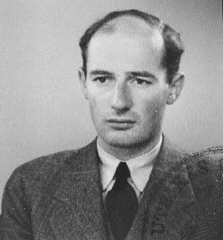
-
The Kielce Pogrom: A Blood Libel Massacre of Holocaust Survivors
ArticleThe Kielce pogrom was a violent massacre in the town of Kielce, Poland in 1946. Learn more about the events that led up to the attack and the aftermath.

-
Displaced Persons: Administration
ArticleLearn about the establishment and administration of displaced persons camps after WWII and the experiences of Jewish DPs.

-
Wannsee Conference and the "Final Solution"
ArticleAt the Wannsee conference of January 1942, Nazi Party and German government officials gathered to coordinate implementation of the “Final Solution to the Jewish Question.”

-
Polish Jewish Refugees in Lithuania, 1939–40
ArticleLearn more about Polish Jewish refugees that relocated to Lithuania between 1939-1940.
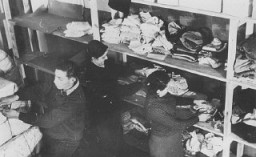
-
Wilhelm Keitel: Biography
ArticleField Marshal Wilhelm Keitel was commander of all German armed forces during World War II. Learn about his military career and postwar trial.

-
The SA
ArticleThe SA (Sturmabteilung) was a paramilitary organization integral to Hitler’s ascension to power. Learn more about the rise and fall of the SA.

-
George Kadish
ArticleAt great risk, George Kadish secretly documented life in the Kovno ghetto in Lithuania, creating a key photographic record of ghetto life during the Holocaust.
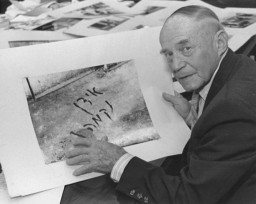
-
Operation Harvest Festival
Timeline EventNovember 3, 1943. On this date, SS and police units implemented "Operation Harvest Festival" (also known as Aktion Erntefest).

-
Page from Otto Wolf's Diary
Timeline EventApril 17, 1945. On this date, Felicitas Wolf wrote her first entry in her brother Otto's diary after his disappearance.
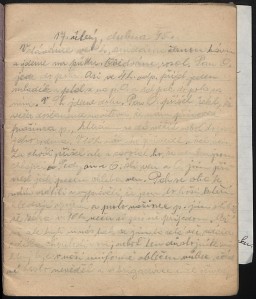
-
Pogroms
ArticleThe term “pogrom” historically refers to violent attacks on Jews by local non-Jewish populations. Learn about pogroms before, during, and after the Holocaust.
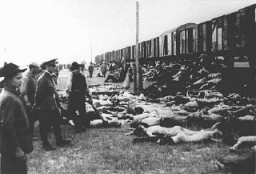
-
Gerda Blachmann Wilchfort describes the mood of passengers on the "St. Louis" after they were denied entry into Cuba
Oral HistoryGerda and her parents obtained visas to sail to Cuba on the "St. Louis" in May 1939. When the ship arrived in Havana harbor, most of the refugees were denied entry and the ship had to return to Europe. Gerda and her parents disembarked in Belgium. In May 1940, Germany attacked Belgium. Gerda and her mother escaped to Switzerland. After the war, they were told that Gerda's father had died during deportation.

-
The United States and the Holocaust, 1942–45
ArticleWhy did the United States go to war? What did Americans know about the “Final Solution”? How did Americans respond to news about the Holocaust? Learn more.

-
Kristallnacht
ArticleOn November 9–10, 1938, the Nazi regime coordinated a wave of antisemitic violence. This became known as Kristallnacht or the "Night of Broken Glass." Learn more

-
Axis Powers in World War II
ArticleThe three principal partners in the Axis alliance were Germany, Italy, and Japan. Learn more about the Axis powers in WW2.

-
Katzenberger Case, March 13, 1942
ArticleThe Nuremberg Special Court ruled on the Katzenberger Race Defilement Case in 1942. Learn more about the outcome and impact of the case.
-
Hajj Amin al-Husayni: Wartime Propagandist
ArticleFormer Mufti of Jerusalem Hajj Amin al-Husayni was an exiled political leader who sought an alliance with the Axis Powers. Learn about his wartime propaganda efforts.
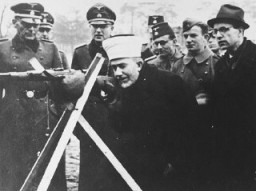
-
Herzogenbusch Main Camp (Vught)
ArticleThe Herzogenbusch concentration camp in the Netherlands began functioning in January 1943. Learn about its establishment, administration, prisoners, and conditions there.

-
Stefania (Fusia) Podgorska
ID CardStefania was born to a Catholic family in a village near Przemysl. They lived on a large farm and cultivated several different crops. While her father worked with the farmhands in the fields, Stefania's mother, a trained midwife, managed the house and cared for her eight children. 1933-39: Stefania's father died in 1938 after an illness. With her mother's approval, she joined her sister in Przemysl in 1939. At 14 she worked in a grocery store owned by the Diamants, a Jewish family. They treated her like…
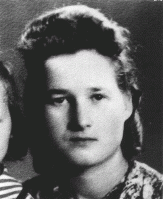
-
Feige Schwarzfink
ID CardFeige was born to a religious Jewish family in the small village of Szydlowiec [in Poland]. She lived with her parents, six brothers and sisters, and elderly grandparents in a small house which, like many homes in the village, had no running water, indoor plumbing, or electricity. Feige's father was a shoemaker. 1933-39: In the afternoons after public school Feige studied at a Jewish religious school. Although her parents didn't know it, she attended meetings of the Bund, the Jewish Socialist party. Feige…

-
Meyer (Max) Rodriguez Garcia
ID CardMax was born to a Jewish family in Amsterdam. He lived in a working-class district occupied by many diamond polishers, of which his father was one. In the 1920s and 30s Amsterdam was a cosmopolitan city with a diverse population. Though his father hoped Max would follow him in the diamond trade, Max dreamed of becoming an architect. 1933-39: Max's happiest years were with close friends in school. His father encouraged him to learn by bringing home newspapers to help his English. After 1933 German Jews…
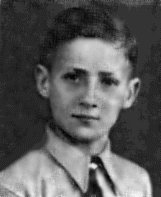
-
Aron Tabrys
ID CardAron was the second of six children born to Jewish parents in Vilna, a city known as a center of Jewish cultural life. He was called Arke by his friends and family. Aron's father supported his large family on the meager income of a chimney sweep. 1933-39: As a child Aron attended a Jewish day school, and then went on to attend a public secondary school. When he was 14 his father had an accident which rendered him blind, and Aron had to start working full-time to support the family. Aron belonged to an…

-
Julius (Julo) Levin
ID CardJulo was born to a Jewish family in the city of Stettin in northeastern Germany. From an early age Julo showed an interest in art; at 6 he had collected more than 3,000 pictures. His family hoped he would become a businessman, but his interest in painting absorbed all his energy. In 1926 he graduated from art school and by 1931 he secured his first commission in Duesseldorf. 1933-39: Until the Nazis came to power in 1933, Julo was a highly regarded artist. The Nazis' strict interpretation of art, however,…

-
Francis Ofner
ID CardFrancis grew up in a city with a Jewish community of 5,000. The Ofners belonged to a synagogue that sponsored many social activities, from sports to care for the elderly. In 1931 Francis began law school at the University of Zagreb. While a student, he organized a service that posted on university bulletin boards the translations of speeches by Nazi leaders broadcast on the radio. 1933-39: By the time Hitler became chancellor of Germany, Francis was heavily involved in trying to unify the university's…
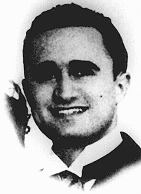
-
Nikola Mrvos
ID CardThe oldest of five children, Nikola was born in a small village in the Croatian part of Yugoslavia. Like his parents, Nikola was baptized in the Serbian Orthodox faith. After receiving his medical degree from Prague University, he married, and in 1912 moved with his wife to Serbia. During World War I he served in the Serbian army, and then settled in Novi Sad where he co-owned a medical clinic. 1933-39: Nikola and his wife raised three children in Novi Sad. Then difficult times brought on by the 1930s…
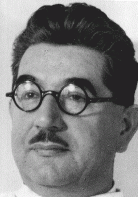
-
Milica Popovic Kuhn
ID CardMilica was the fourth of nine children born to Serbian Orthodox landowners in the Croatian part of Yugoslavia. In 1922 Milica married Milan Kuhn, a Catholic Serb, in a Serbian Orthodox ceremony, and the couple moved to the Macedonian part of Yugoslavia, where Milan was working on hydroelectric projects. In 1932 the couple returned with their young daughter to live in northern Yugoslavia. 1933-39: The Kuhns lived in the city of Zrenjanin in the Vojvodina region where Milan worked as a hydroengineer…
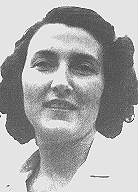
-
Janusz Piotrowski
ID CardJanusz was the eldest of four children born to Catholic parents in Plock, a town located in a rural area north of Warsaw. His father was an accountant. Janusz attended local schools, and became active in scouting. 1933-39: Janusz went to Warsaw to study civil engineering. On September 1, 1939, the Germans began bombing Warsaw. One week later, all able-bodied men who had not been mobilized were directed to retreat east. On September 17, Janusz was 90 miles from the Romanian border. That night, the Soviets…

-
Lore Heumann
ID CardThe younger of two girls, Lore was born to Jewish parents in a village close to the Belgian border. The Heumanns lived above their general store. Across the street lived Lore's grandfather, who kept horses and cows in his large barn. When Lore was a year old, her family moved to the city of Lippstadt. The Lippe River flowed beyond the large garden in back of their house. 1933-39: When Lore was 6, her family moved to the nearby city of Bielefeld, where she entered public school. A year later, she and her…
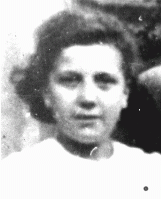
-
Miso Vogel
ID CardMiso came from a religious family in a small village in Slovakia, where his father was a cattle dealer. He was the eldest of five children. When Miso was 6 his family moved to Topol'cany, where the children could attend a Jewish school. Antisemitism was prevalent in Topol'cany. When Miso played soccer, it was always the Catholics versus the Jews. 1933-39: In 1936 Miso had his bar mitzvah and was considered a man. His grandparents traveled 50 miles for it; he was so happy they were all together. In March…
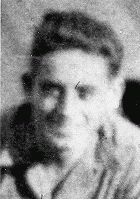
-
Freya Karoline Lang
ID CardAn only child, Freya was born to Jewish parents who lived in a small German town in the Rhine River valley. The Langs owned a successful dry goods business. At this time ready-made clothes were still rare in the countryside. Townspeople and local farmers would purchase fabric at the Lang's store and then take it to their tailor or seamstress to be sewn into a garment. 1933-39: When Freya was growing up, the Nazi party was in power. Many Jews left Germany--Grandmother Lang and one of Freya's uncles sailed…
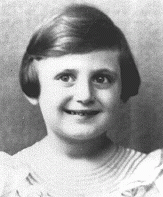
-
Zofia Rapaport
ID CardZofia was born to a Jewish family in Warsaw. Zofia's father, a self-made man who had put himself through university, was a successful banker. The Rapaports lived on a street of single-family homes with gardens. Zofia's room was decorated with yellow lacquered furniture. 1933-39: As a young child, Zofia loved to play with her dog, Chapek. Sometimes she got to go shopping with her mother downtown. Each year during the Jewish holiday of Passover her family visited Zofia's grandparents in Lvov. In late August…
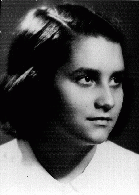
-
David J. Selznik
ID CardThe village in Lithuania where David grew up was located near the Latvian border. His father was a peddler. At age 6, David was sent to Ukmerge, a town known to Jews by its Russian name, Vilkomir, to study traditional Jewish texts at the rabbinical academy there. Six years later, David was called to return home to head the Selznik family because his father had died. 1933-39: David lost his job in 1933, so he left Lithuania and went to the United States and then Portugal. But in 1936 the Baltic states were…
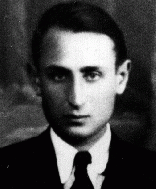
-
Yosel Coller
ID CardOne of six children, Yosel was raised in a religious Jewish family in Lodz, an industrial city in western Poland. His father was a businessman. At the age of 6, Yosel began attending a Jewish day school. His two older sisters attended public school in the morning and religious school in the afternoon. Yosel spent much of his free time playing soccer with his brothers. 1933-39: Yosel's family lived in a modest house in the northern section of Lodz. He went to a Jewish day school and had many friends there.…
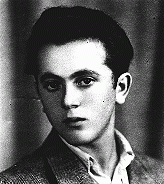
-
Renate Guttmann
ID CardRenate, her twin brother, Rene, and their German-Jewish parents lived in Prague. Shortly before the twins were born, Renate's parents had fled Dresden, Germany, to escape the Nazi government's policies against Jews. Before leaving Germany to live in Czechoslovakia, Renate's father, Herbert, worked in the import-export business. Her mother, Ita, was an accountant. 1933-39: Renate's family lived in a six-story apartment building along the #22 trolley line in Prague. A long, steep flight of stairs led up to…
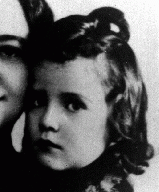
-
Jan-Peter Pfeffer
ID CardJan-Peter's father, Heinz, was a German-Jewish refugee who married Henriette De Leeuw, a Dutch-Jewish woman. Frightened by the Nazi dictatorship and the murder of Heinz's uncle in a concentration camp, they immigrated to the Netherlands when Henriette was nine months pregnant. They settled in Amsterdam. 1933-39: Jan-Peter was born soon after his parents arrived in the Netherlands. He was 18 months old when Tommy, his baby brother, was born. In 1939 the parents and brother of Jan-Peter's father joined them…
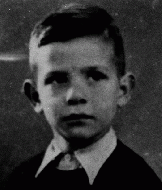
-
Smiljka Ljoljic Visnjevac
ID CardSmiljka was one of three daughters born to Serbian Orthodox parents in the town of Mostar in the central Yugoslav region of Herzegovina. Smiljka's mother died when Smiljka was 3, and the three girls were raised by their father. A tomboy in her youth, at 17 Smiljka won the Miss Makarska Riviera beauty pageant and left for Germany to become a fashion model. 1933-39: Smiljka had a successful modeling career in Berlin. With her tall, slim figure, high cheekbones, and almond-shaped, grey-blue eyes, she was…
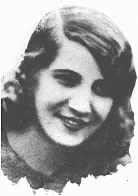
-
Rene Guttmann
ID CardRene, his twin sister, Renate, and their German-Jewish parents lived in Prague. Shortly before the twins were born, Rene's parents had fled Dresden, Germany, to escape the Nazi government's policies against Jews. Before leaving Germany to live in Czechoslovakia, Rene's father, Herbert, had worked in the import-export business. His mother, Ita, was an accountant. 1933-39: Rene's family lived in a six-story apartment building along the #22 trolley line in Prague. A long, steep flight of stairs led up to…

-
Jacob Wasserman
ID CardJacob was the eldest of three sons born to religious Jewish parents in the city of Krakow. His father was a flour merchant. The Wassermans spent summer vacations near Proszowice at a farm owned by their grandfather, who also ran a flour mill. 1933-39: In March 1939, at the age of 13, Jacob celebrated his bar-mitzvah. That summer, his family vacationed as usual at his grandfather's farm. They returned to a nightmare. Krakow had been occupied by the Germans on September 6. Jews were not allowed to walk on…
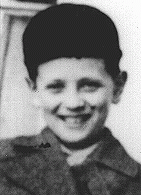
-
Dezso Rozsa
ID CardDezso was from a Jewish family in Hungary's capital, Budapest. His father had been a violinist. Dezso earned a university degree in English, and became a language teacher. He wrote a number of high school grammar textbooks. In 1914 he married Iren Hajdu, who was a mathematician. The couple had two children; a daughter, Eva, born in 1918, and a son, Pal, born seven years later. 1933-39: Dezso fears for the worst now that the antisemitic Prime Minister Teleki has taken power again. Nineteen years ago, in…
